Root Canal Treatment
Root Canal Treatment Cost
| Tooth | Traditional root canal treatment | Root canal treatment under microscope |
|---|---|---|
| Incisors and Canines | $3600 | $6000 |
| Premolars | $3600 | $8000 |
| First Molars | $6000 | $10000 up |
| Second Molars | $8000+ | $10000 up |
What is the difference between traditional root canal treatment and microscopic root canal treatment?
Root canal treatment, also known as endodontic therapy, is a crucial procedure for saving an infected or severely decayed tooth. Traditional root canal treatment typically involves the dentist manually removing infected tissue and sealing the canal, relying largely on visual inspection and conventional tools. However, this method may have limitations, such as difficulty detecting tiny cracks or navigating curved root canals, which can increase the risk of reinfection.
In contrast, microscopic root canal treatment incorporates advanced microscopes, allowing dentists to operate with high magnification for improved accuracy and success rates. The use of a microscope enables the dentist to clearly observe the internal structure of the root canal, accurately removing all infected tissue and repairing minute cracks and complex canal curvatures. This significantly reduces the likelihood of requiring retreatment and aids in preserving the integrity of the natural tooth.
Moreover, microscopic root canal treatment often reduces intraoperative and postoperative pain, leading to shorter recovery times and providing a more comfortable experience for the patient. Due to the increased precision of the treatment, microscopic root canal therapy not only enhances the success rate of tooth preservation but also ensures a more durable outcome.
Overall, microscopic root canal treatment offers superior vision, precision, and improved results, making it a preferable choice in modern dentistry.
What is Root Canal Treatment?
Root canal treatment, is a dental treatment to remove nerves that are inflamed or dead in the tooth. When blood or nerves (pulp) in a tooth become infected due to tooth decay or injury, tooth roots are needed. Dental nerve necrosis can have different symptoms: in the early stages, teeth may experience prolonged pain when exposed to cold water ; At a later stage, the color of the tooth may become dark and dark, which means that the nerves of the tooth have died, and the patient also needs to see a dentist for tooth root treatment.
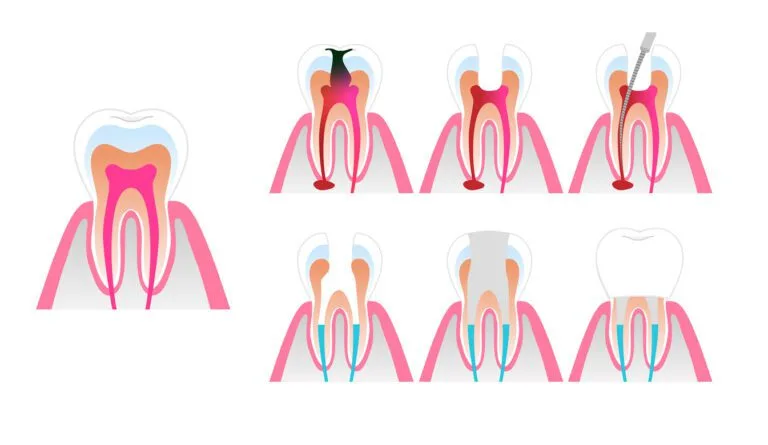
Why do you need root canal treatment?
If the pulp is infected, it may spread through the pulp system to the periodontal tissue and alveolar bone, and eventually the tissue around the tooth may become inflamed with an abscess. Patients will feel pain slowly and are more likely to experience severe pain in severe cases. If the root is not done, the infection may spread, if it is not treated, it may be necessary to extract the entire tooth in the end, so it is recommended that the root should be carried out in time.
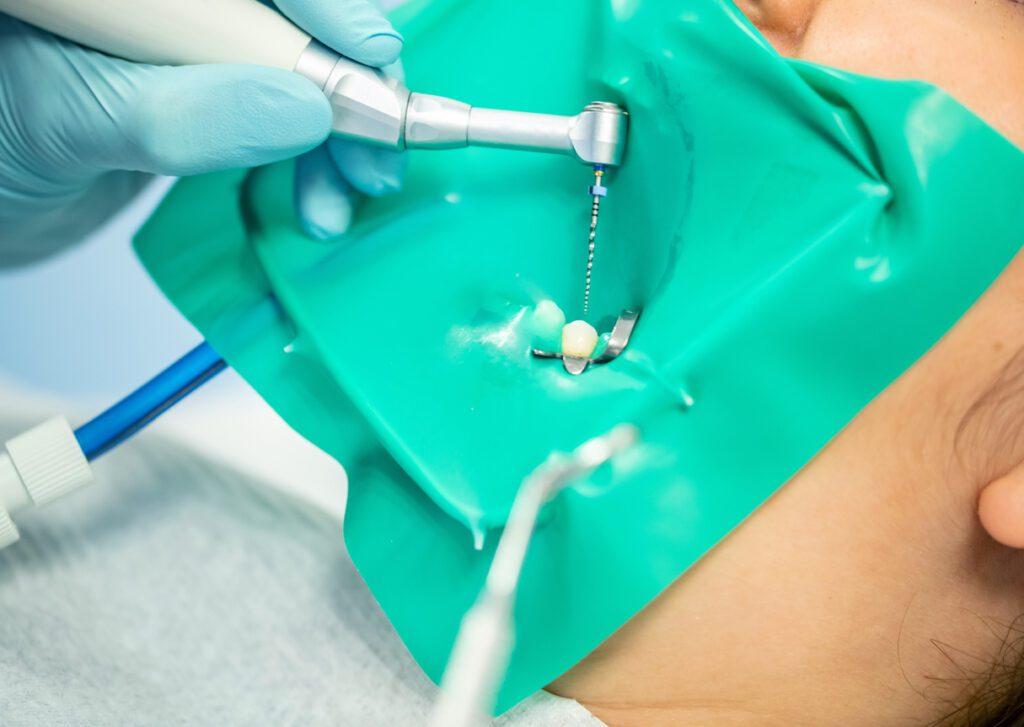
Should tooth decay be filled or root treated?
Tooth decay, if left untreated, can cause serious harm to oral health. For patients suffering from tooth decay, should you choose tooth filling or root canal treatment in the choice of treatment?
Tooth filling refers to the removal of bad tooth tissue at the site of tooth decay, and then filling with filling materials to restore the tooth to its original shape, so that patients can more easily clean the tooth and stop the process of tooth decay. In addition to removing tooth tissue damaged by tooth decay, root canal treatment will also remove the inflamed or necrotic nerves inside the tooth, and then put fillings in the nerve duct to complete the filling of severe tooth decay.
Dental filling is a less invasive treatment option than root canal treatment and is a more conservative practice. So should all patients with tooth decay choose fillings? The answer is no, and it should be judged according to the degree of tooth decay.
The tissue of the tooth can be divided into enamel, dentin and nerves. If tooth decay only affects the exterior of enamel and dentin, usually fillings can already solve the tooth decay. If tooth decay has affected the inside of the dentin and nerves, then the filling is no longer necessary, and only the root can be performed.
So how can I tell to what extent my tooth decay has been affected? The easiest way is to go to a dental office to see a doctor for examination and X-ray to determine the size of the tooth decay. So in addition to seeing a dentist, can you roughly judge the situation of tooth decay? In fact, there are methods:
Depending on the severity of tooth decay, patients may have different symptoms:
In summary, to choose between filling teeth and tooth root, it is necessary to judge according to the symptoms of toothache and the degree of tooth decay. If in doubt, you should see a dentist for examination and consultation.
What is painless root canal treatment?
Root canal treatment is a dental treatment performed under local anesthesia, so there should not be any pain when performing root tooth root under normal circumstances. So why do we sometimes hear that some friends have pain when performing root canal treatment?
The pain that occurs during the root can be roughly divided into three reasons:
1. Pain during anesthesia injections
Anesthesia is given before the root is performed, and local anesthesia is given in the form of an injection, so the injection may be painful for the patient.
If you want to reduce the pain during local anesthesia, you can first ask the doctor to apply the anesthetic ointment on the surface for you, so that the tooth flesh at the place of the anesthesia needle can be surface anesthesiated first to reduce the pain during the injection.
Doctors can also inject anesthesia slowly, as too fast an anesthetic injection can increase pain. Raising the temperature of the anesthetic in advance can also reduce the pain, so some dentists will also put the anesthetic in warm water for a period of time before injecting.
2. Pain during tooth root
Under normal circumstances, the patient’s intradental nerves should be completely anesthetized after local anesthesia. However, if the nerve lines of the patient’s teeth are in a state of severe inflammation, the effect of the local anesthetic solution will be reduced, and the complete anesthesia effect will not be achieved.
Therefore, if your nerve lines are severely inflamed, your dentist may recommend that you take anti-inflammatory painkillers for a few days and wait until the inflammation of your teeth becomes mild.
3. Pain after performing the root of the tooth
When the anesthesia takes effect, the teeth may feel painful. The dentist may give the patient a strong pain reliever to reduce the pain behind the root of the tooth
Therefore, if the painless way to do tooth root is to cooperate with the above points:
- Start with the anesthetic ointment on the surface
- Inject anesthetic slowly
- Put the anesthetic in warm water first
- Take anti-inflammatory painkillers for a few days first
- Powerful painkiller after tooth root
Do I need to put a crown on my tooth after performing root canal treatment
During root treatment, dentists need to make holes in the tooth to clean the nerves in the tooth, so the teeth will become weaker than before the treatment, and some teeth with a higher risk of cracking will need to be protected by crowns.
The following teeth that have undergone root need to be crowned:
- Teeth that require root canal treatment due to severe tooth decay
- The original structure of these teeth has been severely damaged, and together with the cavities required for the root of the tooth, the remaining tooth tissue is very fragile and requires crown for protection
- Molars, which act as the main chew force
- These teeth are stressed and used very often, so they need extra protection
- Teeth that are discolored due to damage to nerves in the teeth
- After nerve necrosis, the inside of the tooth may turn gray. To improve the color of your teeth, you can install braces
Steps of Root Canal Treatment
Root canal treatment is performed in 4 steps, which may be necessary or divided into several treatments
1. Anesthesia
Before the root begins, your dentist will first give you local anesthesia so that you will not feel pain during the treatment.
2. Clean the root canal
The dentist will remove everything inside the root canal, make a small hole in the surface of the tooth, and use a small file to remove the necrotic pulp tissue.
3. Fill the root canal
After that, the dentist will use a small file and rinse solution to clean the hollow area of the tooth. The dentist then fills the tooth with a plastic-like material (Gutta Percha) to completely seal the root.
4. Install the crown
At this stage, teeth can become very fragile, so gaps or crowns should be filled for protection. Occlusion of the tooth should be avoided until the crown or filling is complete. Once the crown is done, you can use your teeth as before, and your diet life and more will return to normal!
Unlocking the Secrets of Root Canal Treatment: A Brief Overview
Root canal treatment, often shrouded in myths and misconceptions, stands as a crucial dental procedure aimed at preserving natural teeth. At Nixon Dental, our expertise in root canal treatment HK and crowns transcends the ordinary, offering patients a path to optimal oral health. Root canal treatment becomes imperative when the pulp of a tooth becomes infected or damaged. Contrary to common belief, this procedure is not a source of discomfort but a solution to alleviate pain and preserve the natural tooth. The significance lies in the prevention of tooth loss, maintaining the structural integrity of the smile.
Nixon Dental stands as a beacon of expertise in root canal treatment HK and the artistry of crowns. Our approach goes beyond the conventional, recognizing that each patient’s journey is unique. We don’t just focus on treating dental issues; we aim to restore confidence in every smile we touch.
The Root Canal Treatment Process: A Symphony of Precision
The root canal treatment procedure at Nixon Dental is a carefully orchestrated process. Root canal treatment procedure commences with thorough assessments and diagnostics, ensuring a tailored approach to each patient. Our commitment to pain management through precise anesthesia administration sets the stage for a comfortable experience.
The core of the root canal treatment procedure involves the removal of infected pulp, cleaning of the canal, and meticulous sealing to prevent further infection. Utilizing advanced technology, we elevate the root canal treatment procedure experience, making it efficient, effective, and virtually painless.
Preserving the Crown Jewel: The Role of Dental Crowns
While root canal treatment addresses the internal health of the tooth, the crown serves as its protective armor. Nixon Dental’s expertise extends to crafting crowns that not only restore the tooth’s functionality but also enhance its aesthetic appeal. From traditional crowns to more advanced options, our approach is tailored to meet individual needs.
Why Choose Nixon Dental?
Personalized Care: Our approach is centered around you. We recognize that no two smiles are alike, and our personalized care reflects this understanding.
Advanced Technology: Nixon Dental embraces cutting-edge technology in root canal treatments, ensuring precision, efficiency, and a seamless patient experience.
Expert Team: Our team of professionals brings a wealth of experience and expertise, guaranteeing that you receive the highest standard of care.
Transparent Communication: We believe in transparent communication. From the initial consultation to the completion of the procedure, you’ll be informed and involved in every step.
Demystifying Root Canal Treatment: A Comprehensive Guide
Root canal treatment, often shrouded in misconceptions, is a vital dental procedure designed to salvage natural teeth. This guide aims to unravel the complexities surrounding root canal therapy, shedding light on its definition, purpose, and the critical role it plays in preserving dental health.
Definition and Purpose of Root Canal Treatment:
Root canal treatment, commonly referred to as endodontic therapy, is a dental procedure performed to treat infected or damaged pulp within the tooth. The pulp, a soft tissue containing nerves, blood vessels, and connective tissue, can become compromised due to deep decay, trauma, or other dental issues. The primary purpose of root canal treatment is to remove the infected or damaged pulp, clean the internal space (root canal), and seal it to prevent further infection.
Common Signs and Symptoms Necessitating Root Canal Therapy:
Understanding when root canal therapy might be necessary involves recognizing the signs and symptoms indicating potential issues within the tooth’s pulp. Common indicators include:
Persistent Toothache:
Unrelenting pain, especially when chewing or applying pressure, may signify pulp inflammation or infection.
Sensitivity to Hot or Cold:
Heightened sensitivity to hot or cold temperatures, lasting beyond the exposure, can be indicative of pulp problems.
Swollen Gums:
Swelling, tenderness, or the presence of a pimple on the gums could be a sign of an abscess, a pus-filled pocket resulting from infection.
Discoloration of the Tooth:
Darkening or discoloration of a tooth may suggest damage or death of the pulp.
Prolonged Pain After Dental Procedures:
Pain persisting after dental work, such as a filling, may indicate underlying pulp issues.
Importance of Timely Intervention in Preserving Dental Health:
Timely intervention in cases requiring root canal treatment HK is paramount to preserving dental health and preventing further complications. Delaying or neglecting treatment can lead to:
Spread of Infection:
Untreated infections within the tooth can spread to surrounding tissues and even the jawbone, causing more extensive damage.
Tooth Loss:
Prolonged neglect may necessitate tooth extraction, leading to the loss of a natural tooth.
Systemic Health Impact:
Dental infections can have systemic implications, potentially affecting overall health.
Chronic Pain and Discomfort:
Ignoring root canal issues may result in persistent pain and discomfort, significantly impacting the quality of life.
Navigating the Root Canal Treatment Procedure
It often a misunderstood root canal treatment procedure, is a crucial step in preserving natural teeth and alleviating pain. This guide delves into the intricate details of the root canal treatment procedure, providing a step-by-step breakdown, exploring advanced technologies, and understanding variations in treatments.
A. Step-by-Step Breakdown of the Root Canal Treatment Procedure:
Initial Assessments and Diagnostics:
The journey begins with a comprehensive root canal treatment procedure assessment of the tooth’s condition. Utilizing advanced diagnostics, including X-rays, our dental professionals meticulously examine the tooth’s anatomy, identifying the location and extent of infection or damage.
Anesthesia Administration:
Ensuring a pain-free experience is a priority in root canal treatment HK. Local anesthesia is administered to numb the tooth and surrounding area, guaranteeing comfort throughout the root canal treatment procedure.
Pulp Removal and Cleaning:
With the tooth numb, the next phase involves accessing the pulp chamber and removing the infected or damaged pulp. The root canal is carefully cleaned, removing debris, bacteria, and any remnants of the pulp.
Filling and Sealing the Root Canal:
Once cleaned, the root canal is filled with a biocompatible material, often gutta-percha, to seal the space. This prevents the re-entry of bacteria and ensures the structural integrity of the tooth.
B. Utilization of Advanced Technology in Root Canal Procedures:
Root canal treatments HK at Nixon Dental are elevated through the incorporation of cutting-edge technology, enhancing precision and efficiency:
Digital Radiography:
High-resolution digital X-rays provide detailed images, aiding in accurate diagnostics and treatment planning.
Rotary Endodontics:
Rotary instruments, driven by electric motors, enable precise and efficient cleaning and shaping of the root canal, reducing treatment time.
Apex Locators:
These devices determine the apex (tip) of the root, ensuring thorough cleaning and precise filling of the root canal.
3D Imaging:
Cone Beam Computed Tomography (CBCT) provides three-dimensional images, offering a more comprehensive view of the tooth’s anatomy.
C. Overview of Variations in Root Canal Treatments:
Root canal treatment HK may vary based on individual cases and tooth conditions:
Standard Root Canal:
Applied to teeth with straightforward canal anatomy, involving the cleaning and sealing of the main root canals.
Complex Root Canal:
Necessary for teeth with intricate canal systems or additional canals, requiring advanced skills and technology.
Re-Root Canal Treatment:
Performed on teeth where a previous root canal has failed, involving the removal of existing materials and re-treatment.
Apicoectomy:
In cases of persistent infection, the removal of the tooth’s apex (tip) and sealing the root canal from a different approach.
Nixon Dental's Commitment to Excellence:
At Nixon Dental, our commitment to excellence in root canal treatment HK is evident in every step of the process. From precision diagnostics to utilizing state-of-the-art technology, we prioritize patient comfort and optimal outcomes. Our experienced team ensures that each root canal treatment HK is tailored to individual needs, fostering a supportive and patient-centric environment.
Preserving Smiles: Unveiling the Significance of Root Canal Treatment Crown
Root canal treatment (RCT) is a transformative dental procedure aimed at salvaging compromised teeth, but the journey doesn’t end there. Understanding the significance of root canal treatment crowns is essential in comprehending the comprehensive approach to restoring and protecting teeth post-treatment. This guide delves into the introduction of dental crowns, their pivotal role in safeguarding and restoring teeth after root canal treatment, and the diverse types of crowns tailored for such scenarios.
Dental crowns, often referred to as “caps,” are custom-fitted covers placed over damaged or weakened teeth. Crafted from various materials such as porcelain, metal, or a combination of both, crowns serve both functional and aesthetic purposes. The primary objective is to provide strength, protection, and an aesthetically pleasing appearance to teeth that have undergone extensive dental work.
Role of Crowns in Protecting and Restoring Teeth after Root Canal Treatment:
Reinforcing Tooth Structure:
The process of root canal treatment involves the removal of infected or damaged pulp from the tooth’s interior. While this resolves the immediate issue, it can leave the tooth structurally compromised. A crown, placed over the treated tooth, acts as a reinforcement, preventing fractures and preserving the overall structure.
Sealing the Tooth:
The crown serves as a protective shield, sealing the entire tooth and preventing the re-entry of bacteria. This is crucial in averting the risk of reinfection and ensuring the longevity of the root canal treatment.
Restoration of Functionality:
Post root canal treatment, the tooth may lose some functionality. Crowns are designed to restore the tooth’s functionality, enabling normal chewing, biting, and speaking without compromising comfort.
Aesthetic Enhancement:
Dental crowns are crafted to match the color, shape, and size of natural teeth, contributing to an aesthetically pleasing and harmonious smile. This is particularly important for front teeth or those visible when smiling.
Types of Crowns Suitable for Root Canal-Treated Teeth:
Porcelain Crowns:
Known for their natural appearance and excellent aesthetic qualities, porcelain crowns are suitable for front teeth. They are, however, not as durable as some other materials.
Metal Crowns:
Metal crowns, often made of alloys like gold or silver, are highly durable and less prone to wear. While not as aesthetically pleasing, they are an excellent choice for molars due to their strength.
Porcelain-Fused-to-Metal (PFM) Crowns:
Combining the strength of metal with the aesthetics of porcelain, PFM crowns offer a balanced solution. They are often chosen for both front and back teeth.
All-Ceramic Crowns:
These crowns are entirely made of ceramic materials, providing a natural appearance and suitable for front and back teeth. They are a popular choice for those seeking aesthetics without compromising strength.
Zirconia Crowns:
Zirconia crowns combine strength and aesthetics, making them a versatile choice for various teeth. They are known for their durability and natural translucency.
Nixon Dental's Approach to Root Canal Treatment Crowns:
At Nixon Dental, our approach to root canal treatment crowns is rooted in precision, aesthetics, and patient satisfaction. Our experienced dental professionals conduct thorough assessments to determine the most suitable type of crown based on individual needs, preferences, and the location of the treated tooth.
Demystifying Root Canal Treatment Costs: Your Path to Clarity
Root canal treatment is a valuable dental procedure, often clouded by uncertainties surrounding its costs. This guide aims to bring transparency to the table, offering a clear breakdown of root canal treatment costs, factors influencing pricing, industry standards, and avenues for potential financial assistance.
Root Canal Treatment Cost: Unveiling the Numbers
At Nixon Dental, we believe root canal treatment cost in transparency, ensuring our patients are well-informed about the root canal treatment cost. The root canal treatment cost for this procedure stands at $3600 at our clinic. Notably, this price applies uniformly to incisors, premolars, and first molars, ensuring fairness and consistency in our pricing structure. The comprehensive root canal treatment cost package includes essential elements such as consultation, X-rays, and necessary medications.
Factors Influencing the Cost of Root Canal Therapy:
Understanding the intricacies of root canal treatment costs involves considering various factors that contribute to the overall pricing. These include:
Tooth Location:
The position of the affected tooth plays a role in determining the complexity of the root canal procedure. Molars, being posterior teeth, may involve more intricate canal systems, potentially influencing the cost.
Extent of Damage or Infection:
The severity of the dental issue requiring root canal therapy can impact the complexity of the procedure. Extensive damage or widespread infection may necessitate more intensive treatment, affecting the overall cost.
Type of Restoration:
After a root canal, the tooth typically requires a crown for protection and restoration. The type of crown chosen, whether porcelain, metal, or a combination, can influence the total cost.
Dental Professional's Expertise:
The experience and skill of the dental professional performing the root canal procedure contribute to the overall cost. Seasoned professionals may command higher fees based on their expertise.
Comparisons with Industry Standards and Considerations:
In assessing root canal treatment costs, it’s essential to consider industry standards and benchmarks. At $3600, Nixon Dental’s root canal treatment cost aligns with competitive rates, offering a balance between quality and affordability. It’s crucial for patients to recognize the value of the services provided and the comprehensive nature of the package, encompassing consultation, X-rays, and medications.
Root Canal Treatment step

Comprehensive oral examination
Your doctor will first perform a comprehensive oral examination, including tooth decay and preliminary periodontal disease examination, to ensure that other dental problems are not overlooked. The doctor will then take a picture of your mouth and record it.
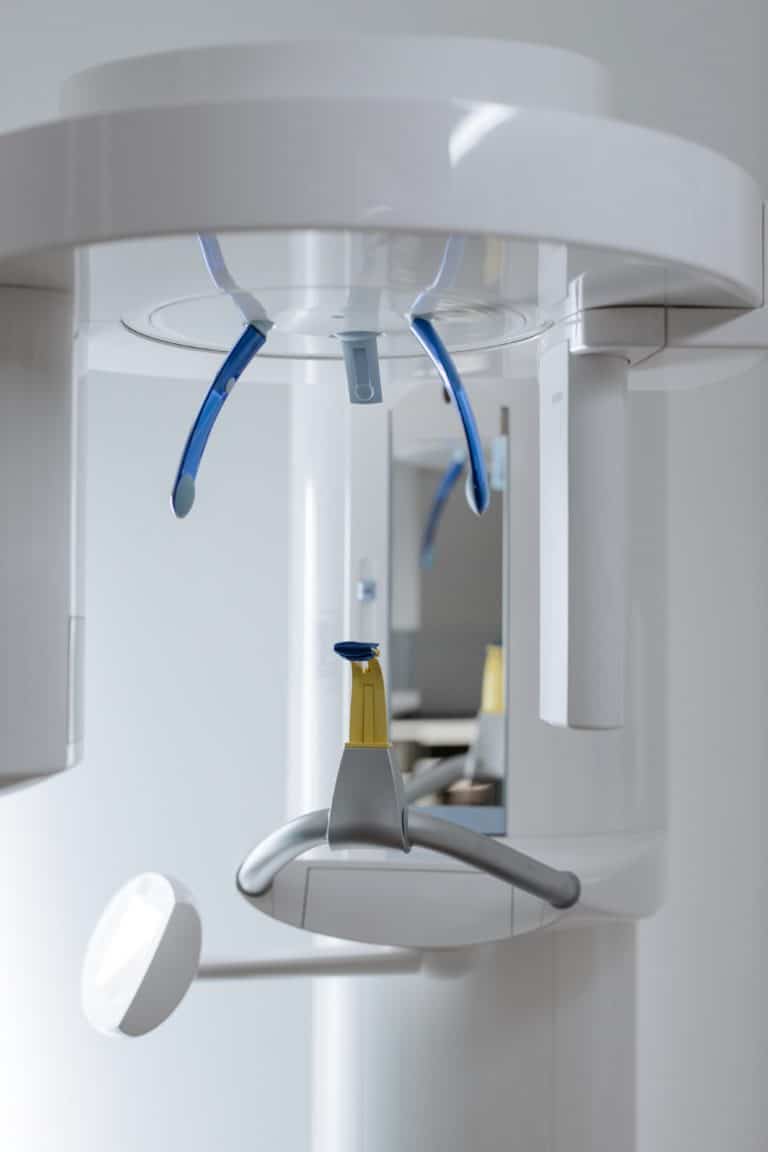
X-rays needed to take the root of the tooth
X-rays will be taken for each patient who needs to be root to assist in the diagnosis and execution.

First Visit
During the first treatment, the doctor will remove the frog tooth, remove the infected dental nerve at the top, identify all the nerve ducts, disinfect the dental nerve canals, and finally fill the teeth with temporary filling materials.

Second Visit
In the second treatment, the doctor will measure the length of all nerve ducts and clean the infected dental nerve at the bottom, clean all the nerve channels completely, disinfect the dental nerve ducts, and finally fill the teeth with temporary fillings.
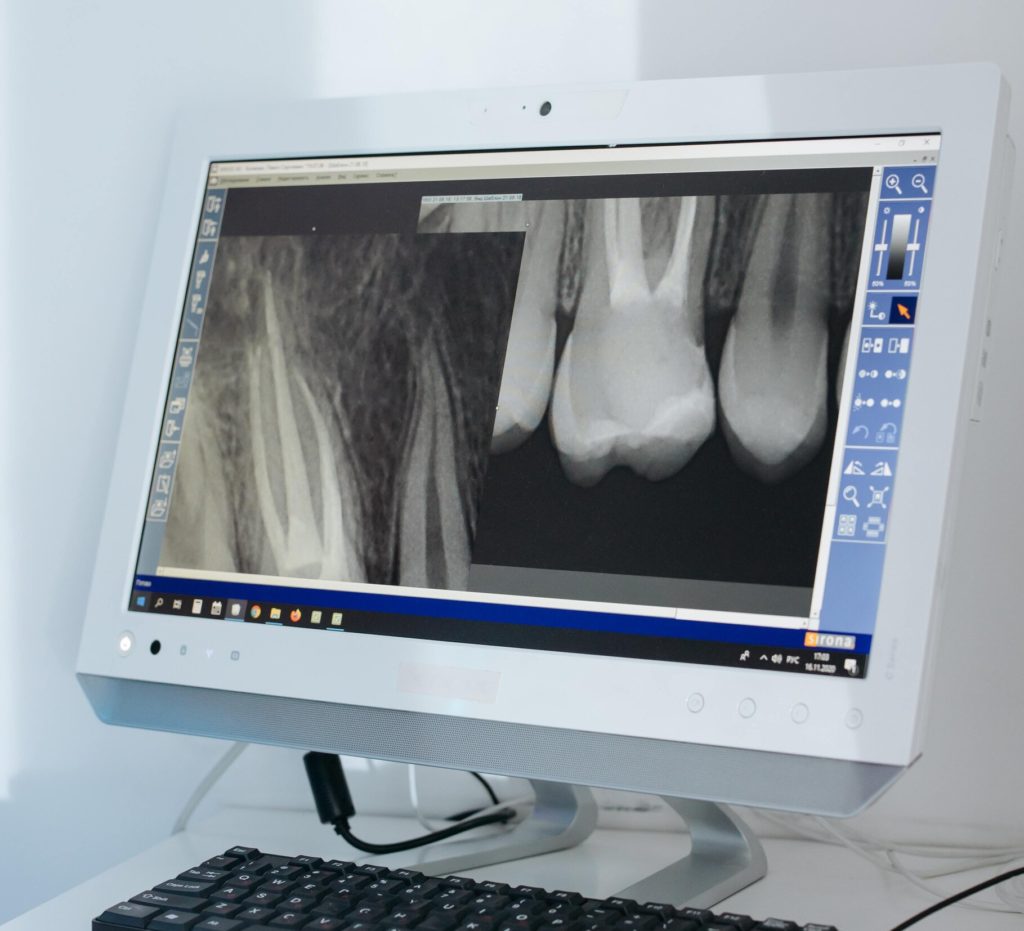
Third Visit
On the third treatment, the doctor will fill all the nerves in your tooth and finally fill your tooth with the final filling material.
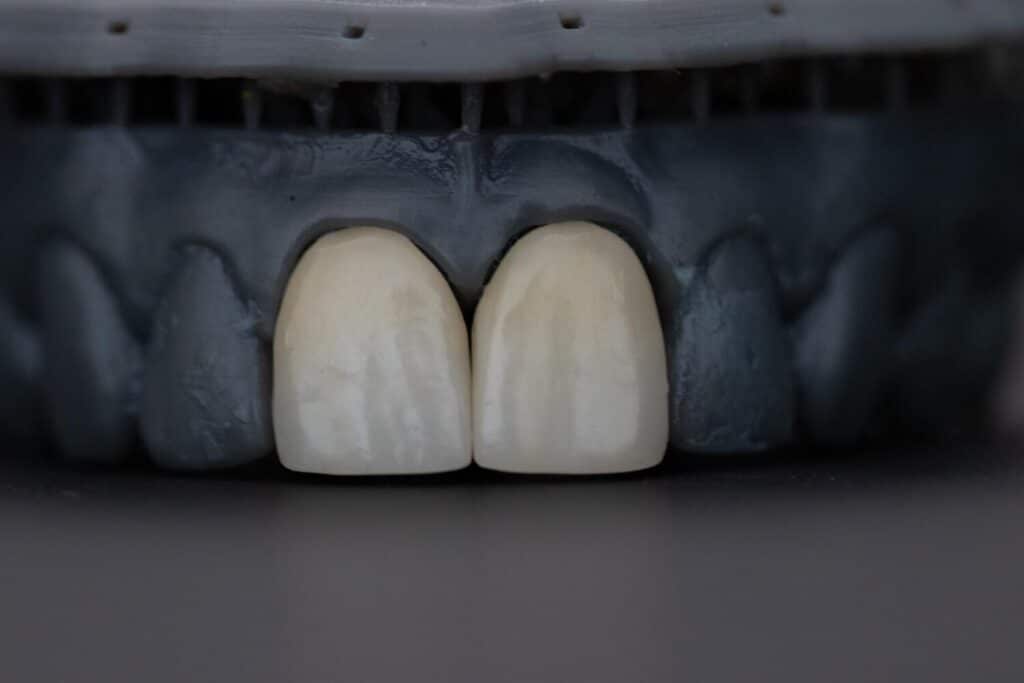
Crown
Teeth that have undergone root are weaker than other teeth and may need to be fitted with an artificial crown to protect the tooth and reduce the risk of breakage.
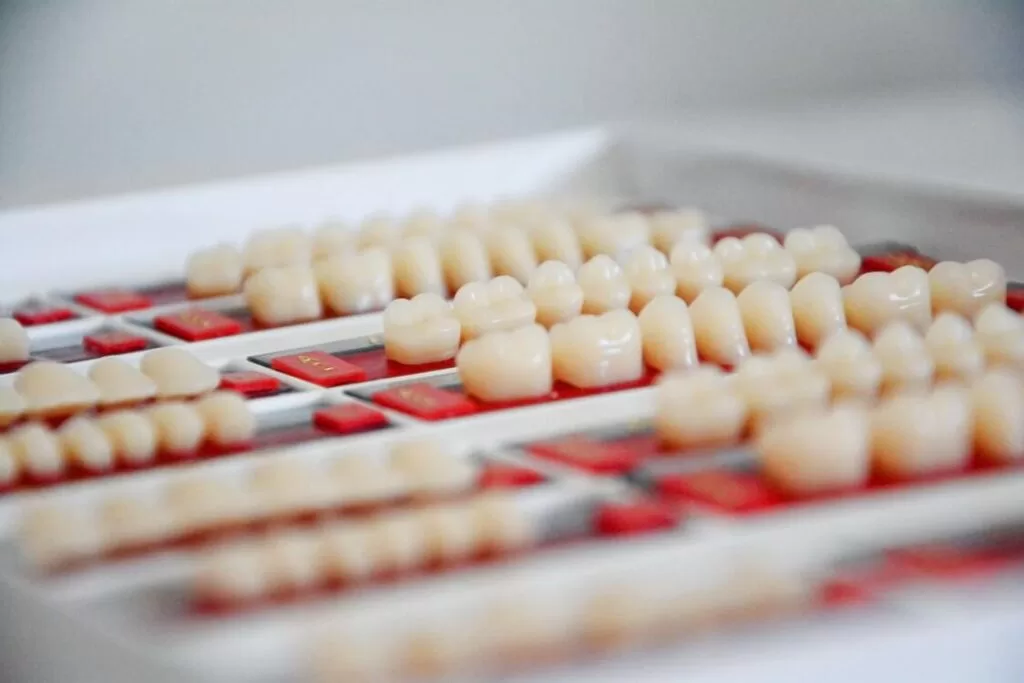
Crown cementation
After a week, your doctor will put a crown on top of your teeth in order to protect your teeth that have been root treated.

Follow-up
You should have regular check-ups of your teeth that have been rooted, observe the well-being of the bones and ensure that the crown is well cared for to avoid re-decay under the crown.
Root Canal Treatment Crown FAQs
A crown for root treated tooth is a crown placed over a tooth that has undergone root canal therapy. It serves to protect and strengthen the tooth, ensuring its functionality and aesthetics are restored.
After root canal therapy, the treated tooth may be structurally compromised. A crown is necessary to provide reinforcement, prevent fractures, and ensure the longevity of the root canal treatment.
The suitability of crowns depends on factors such as location and patient preferences. Options include porcelain crowns for aesthetics, metal crowns for durability, porcelain-fused-to-metal (PFM) crowns for a balanced approach, and zirconia crowns for strength and translucency.
The cost for a root canal treatment at Nixon Dental is $3600-$10000 up. The actual costs depends on the type of tooth, the use of microscope and the location.
Nixon Dental’s comprehensive root canal treatment HK package covers essential elements (Except fillings), minimizing additional costs. However, root canal treatment HK patients may incur extra expenses if they opt for specific types of crowns beyond the standard offerings.
The procedure duration varies based on factors like tooth location and complexity. Generally, it involves an initial consultation, impressions, root canal treatment,crown fabrication, and a follow-up appointment for crown placement. The entire process spans a few weeks.
Dental professionals at Nixon Dental prioritize patient comfort. Local anesthesia is administered during the procedure to minimize discomfort. Post-procedure, any mild discomfort can usually be managed with over-the-counter pain relievers.
Yes, patients have the liberty to choose the type of crown based on their preferences and budget. Our dental professionals provide root canal treatment guidance on the most suitable options for each case.
Many dental insurance plans offer coverage for root canal treatment crowns, recognizing them as essential for oral health. Patients are advised to check their insurance policies for details on coverage.
Nixon Dental understands the financial considerations of dental care. We offer flexible payment plans and financing options, allowing patients to manage the cost of root canal treatment crowns over convenient periods.